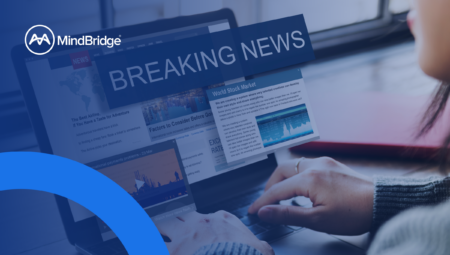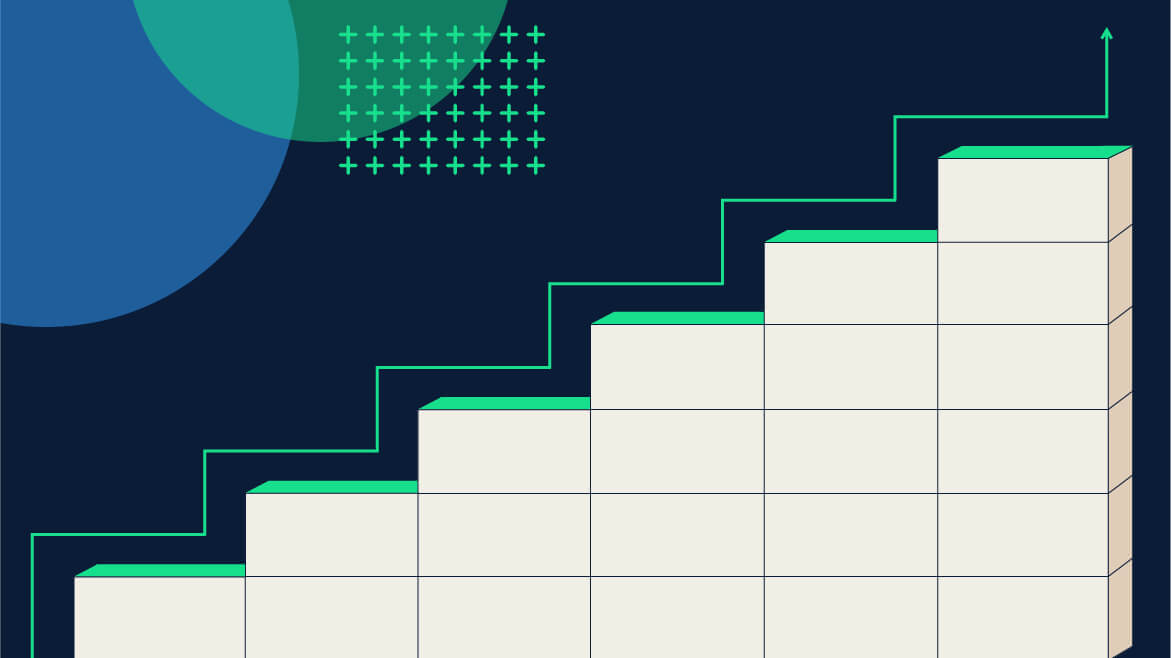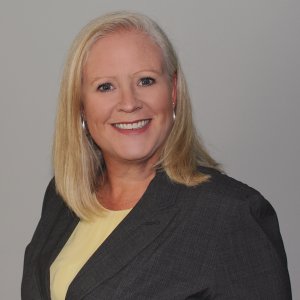Preparing for an accounting career is much more complex than you may think.
Once upon a time, our grade school teachers drilled into us that we wouldn’t always have calculators in our hands to help tackle the world’s everyday math problems. Little did they know that our smartphones would be cleverly fitted with a default calculator app, perfectly for the palms of our hands.
In the latest acknowledgement of this phenomenon, it seems that today’s accountants are facing a similar issue – the industry is moving too quickly for educators to catch up, and to prepare their students properly for a shifting accounting career.
Which begs the question, is it time to update the curriculum?
Changes for the 21st century
Technological advancements: Accounting, audit, and beyond
A lot has changed since the last generation of accountants began their careers, and the consensus among them is that they are looking for today’s graduates to be agile, flexible, and adaptable with whatever technologies are thrown their way.
Whether it be for spreadsheets, tax preparation, research software, communication, and data analytics — today’s professional accountants use technology constantly.
A learned profession like accounting requires years of study, licenses, and a mindset that recognizes the need for continuous learning. In an article for CPA Journal, Stephanie M. Bryant, the Executive Vice President and Chief Accreditation Officer at the Association to Advance Collegiate Schools of Business (AACSB) International, writes about the large skills gap she experienced when she began her first professional accounting job: “It was my job to be an expert,” she writes. “The difference between making a grade in a class and working on a real client issue was quite a wake-up call for me.”
“It was my job to be an expert,” she writes. “The difference between making a grade in a class and working on a real client issue was quite a wake-up call for me.”
Years later, she said, the skills gap has persisted, with the theory portions being extensive in the curriculum while major gaps related to the currency and relevance of actual accounting practices persist. In particular, a student’s ability to synthesize and apply information critically — with or without the use of ever-changing technology. “It is essential that students develop technological agility and a growth mindset to be successful in today’s work environment.”
Bridging the gap: Theory vs reality
When AACSB-accreditation was introduced for business programs, it helped establish a standard of quality that ensured the curriculums met the needs found in professional settings. But still, gaps persisted.
According to the same CPA Journal article, in 2018, a task force of 19 highly respected accounting educators and accounting practitioners—including leaders from the National Association of State Boards of Accountancy (NASBA), the Institute of Management Accountants (IMA), the AICPA, and public accounting—worked for almost 20 months to develop updated accounting standards that would bridge the gap between academic and workforce expectations for new accounting graduates.
It was determined that, since accounting is a rapidly changing field, schools intend to prepare students for an accounting career it must ensure their content is reflective of the work new graduates will be expected to do by reviewing their courses and curriculum regularly.

In an article from CFODive, Paul Clancy, Senior visiting lecturer of finance at Cornell University spoke to the changes, addressing that the fundamental qualities to succeed are much the same; strong analytical skills, critical thinking skills, perseverance, integrity and teamwork. He noted that “these skills, many of which are developed at your university or college, can continue to be honed throughout life.”
An accounting career in our virtual world
A new challenge that today and tomorrow’s accountants must face is our virtual reality. No, not video games. Remote accounting and audit work has created new obstacles for today’s financial professionals that the next generation need to prepare for.
As much as we’re all looking forward to getting “back to normal,” many doubt that fully remote or hybrid financial work is going anywhere.

In light of this, educators must stress the importance of remote work and learning by introducing engaging tools and platforms for their students. We’ve all taken a class from home that we’ve written off as “too easy,” or “not worth our time.” But, given the not-so-distant future of physically-distant accounting, it’s time for students and educators to take things more seriously.
For many accountants, searching for tools that enable and enhance remote work has been crucial. Continuing to thrive outside of the office requires a different mindset, approach, and specific tools. Tools that utilize artificial intelligence, machine learning, and more automation-based technologies are making their way into tech stacks around the world.
But, just because they can make work more efficient, doesn’t make them simple to learn.
Technological agility and resilience
Moreover, agility has become a crucial skill for new finance teams. New graduates are beginning to recognize the importance for finance professionals to broaden their digital skills to include data analytics, risk management, cybersecurity and business modeling into their repertoire.
With that, the 2018 standards incorporated a theoretical shift to include technological agility as a new focus. Today’s accounting students must be able to adapt to new technologies quickly and continuously. Specifically, a focus on artificial intelligence and data analytics are of particular interest, but are frequently missing from university and college classrooms.
To find out more, we spoke with an active educator in a university accounting classroom.
Ann Vanstraelen, Full Professor of Accounting and Assurance Services and Chair of the Department Accounting Information Management (AIM) at Maastricht University in the Netherlands, had been searching for a way to better incorporate emerging technologies like AI into their curriculum.
She notes the traditional, “old way” of teaching accounting was to teach Excel skills and then assign a project that would reinforce those particular Excel skills. However, to be more effective and prepare students for real world circumstances, Vanstraelen notes, educators must expose students to a problem, ask them how best to address it, and require them to identify the different pathways to a solution.
This involves determining which current technologies and datasets to use, where the relevant sources are, and how they would integrate and synthesize facts to create a solution.
According to Vanstraelen, this mindset is paramount to success in the new age of accounting:
“Students hear about AI in the news and media quite extensively and want to learn more about it. By the time they graduate, students need to understand data analytics in a context beyond the textbook.”
Thankfully, Vanstraelen came across the Mindbridge University Program, which allowed her to integrate these topics into her existing curriculum at no extra cost. Plus, the students love it.
“They are positively surprised that they get to use it in such a hands-on fashion in our bachelor auditing and fraud detection course and appreciate that we’re letting them see how it actually works and how it’s used in real accounting practices.”
Like MindBridge, many organizations are beginning to explore the value of preparing the professionals of tomorrow with tools and knowledge today. The accounting world is rapidly evolving. Without the proper technology and knowledge, tomorrow’s accountants and auditors will graduate unprepared. We believe it is our duty to help educators bridge the gap between books and technology, theory and reality, education and an accounting career.
Read on to learn more about how the MindBridge University Alliance Program is helping students and educators get ahead.
How companies and firms are helping to bridge the gap from school to an accounting career
In 2018, MindBridge launched the University Alliance Program, an initiative designed to introduce the next generation of accountants and auditors to the power of artificial intelligence in augmenting the financial processes.
Since then, the University Alliance Program has been adopted by over 100 universities and colleges around the world. The curriculum offers educational materials with hands-on case studies and training, allowing students to learn and experience the power of artificial intelligence and data analytics in performing a financial analysis using MindBridge. With the material being incorporated into advanced audit, data analytics, accounting information systems, and fraud investigation courses.
Here’s an example of a classroom case study would look like:
Finding fraud using AI | |
|---|---|
Background |
|
Task |
|
Learning outcome |
|
Ryan Teeter, a Clinical Assistant Professor at the University of Pittsburgh has incorporated MindBridge into his graduate courses, and after finding success, wants to bridge the content into his undergraduate classes as well. “Being able to have something that is straightforward and shows the different techniques while also piquing the undergraduates interest toward data analysis, risk scoring, and applied statistics are areas that are very useful,” he said.
Professors from around the world are seeing the value of bringing AI and data analytics into their classrooms. To learn more about them, check out our case studies and customer stories.
For more information on how you can participate in the MindBridge University Alliance Program, or to apply, click here.




